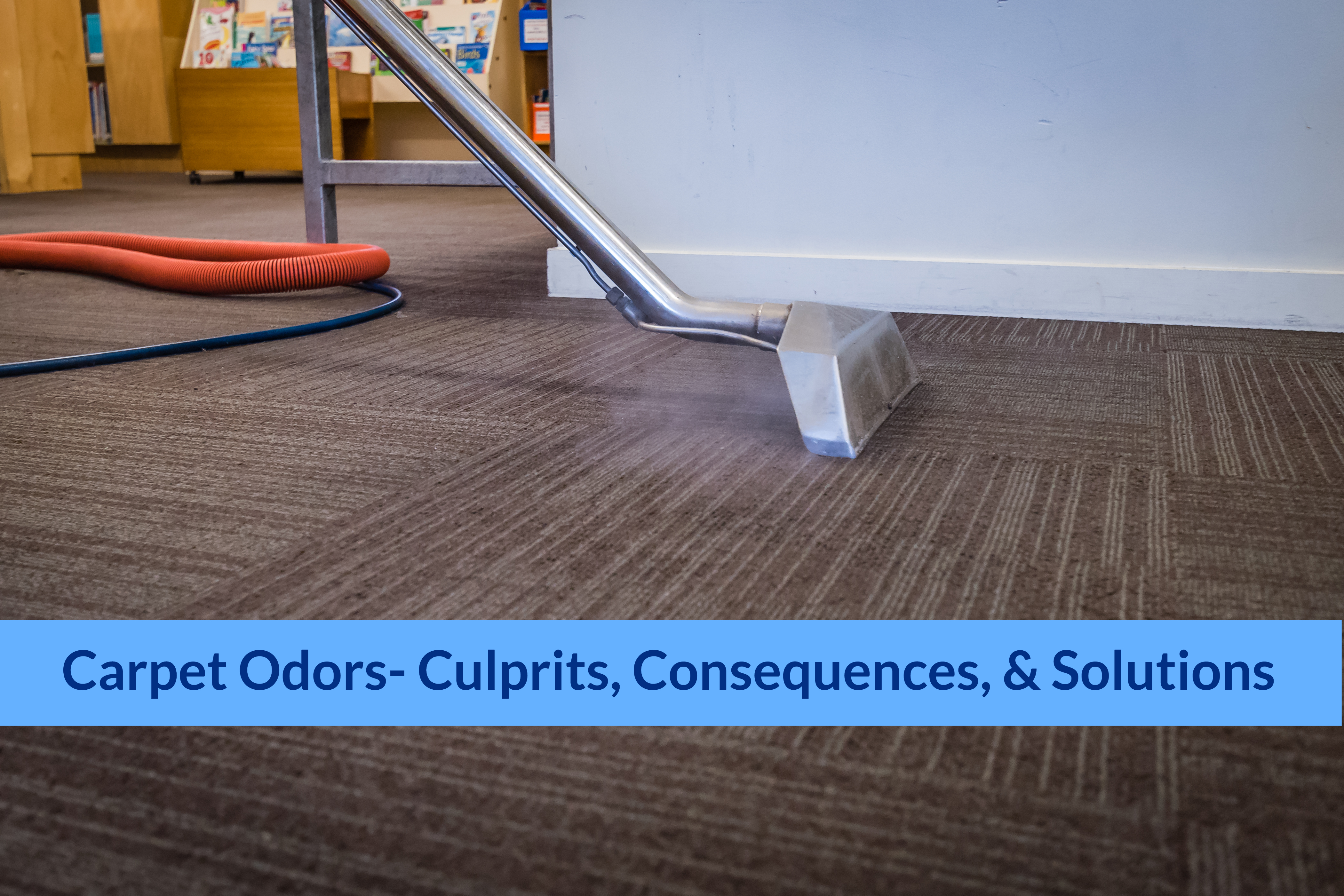
 Well-maintained carpeting can help promote an attractive and healthy environment for any public or commercial facility. On the other hand, carpeting that is neglected can create a host of issues for a facility's inhabitants and its visitors. Carpet odors can stem from a variety of sources and---if left unchecked--- can create negative consequences that go beyond mere annoyance.
Well-maintained carpeting can help promote an attractive and healthy environment for any public or commercial facility. On the other hand, carpeting that is neglected can create a host of issues for a facility's inhabitants and its visitors. Carpet odors can stem from a variety of sources and---if left unchecked--- can create negative consequences that go beyond mere annoyance.
What are some of the common causes of carpet odors and what can be done about them?
Carpet Odors - The Culprits
In many cases, the first indication of a problem will be the onset of a musty smell emanating from the carpeting. Initially this odor may be slight but, over time, will become increasingly unpleasant. Some typical sources of carpet odor can include:
- Moisture-a prime culprit: Your carpet can be exposed to moisture from a variety of sources: water tracked in on soles of shoes, liquid spills that are not properly removed, water from internal flooding and plumbing leaks, etc. Over time this moisture will seep underneath the carpeting and become trapped between the carpet and its padding. This will quickly become a breeding for ground musty-smelling mold and mildew.
- Stains: Carpet stains are not just unsightly, they can also smell. When not properly treated, stains caused by spilled food and drink can create unpleasant odors. Food stains can be especially problematic as their contents can rot over time and further amplify their unpleasant odor.
The Consequences
It is widely known that poorly maintained carpeting can be a primary source of illness for the occupants of a facility. Mold, mildew, stains, etc. can create a host of heath issues, including: allergies, eye irritation, throat irritation, and respiratory problems. In addition to the health risks, carpet odors can create a negative first impression for visitors. A facility that is otherwise clean and tidy can suffer from negative first impressions due to foul-smelling carpeting.
The Solutions
When maintaining your carpeting it is important that you follow any specific maintenance instructions recommended by the manufacturer. In the vast majority of cases, following a few basic principles will help keep your carpet smelling fresh and healthy. A basic plan should include:
- Regular vacuuming: Vacuuming is the first line of defense. Vacuuming frequency will depend on various factors such as facility type, occupancy levels, and traffic. Carpet deodorizers should be applied periodically as part of the vacuuming process.
- Periodic Deep Cleaning: As contaminates accumulate within the deeper recesses of carpeting a deep cleaning will be required to remove those contaminates. A good rule of thumb is to conduct a deep cleaning 2 or 3 times per year.
- Prompt stain removal: Stains that sit are the stains that stink. All stains should be treated as quickly as possible. Stains that are allowed to sit for longer periods of time can become more firmly embedded within the carpeting and more difficult to remove. For more information on carpet stain removal refer to the following post How to Remove Tough Carpet Stains .
Your carpeting represents a significant investment. Keeping carpet odors at bay will help protect that investment while also helping provide a pleasant environment for your facilities occupants and visitors.



.jpg?width=220&height=135&name=Blog%20Listing%20Image%20(13).jpg)
-1.jpg?width=220&height=135&name=Blog%20Listing%20Image%20(5)-1.jpg)

.png?width=180&height=138&name=Untitled%20design%20(25).png)


